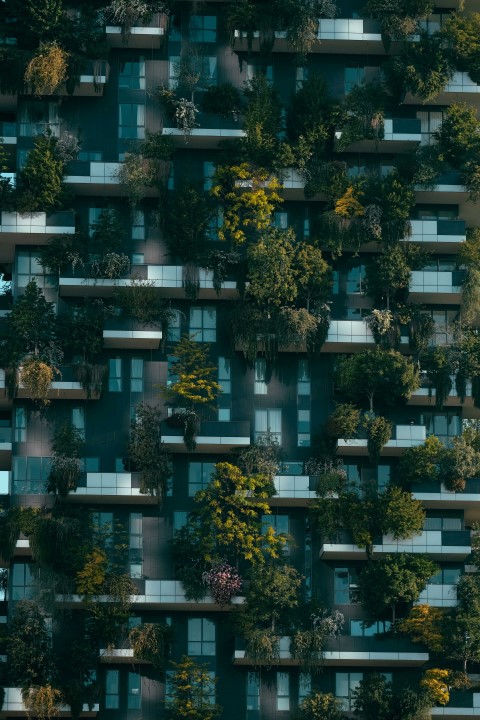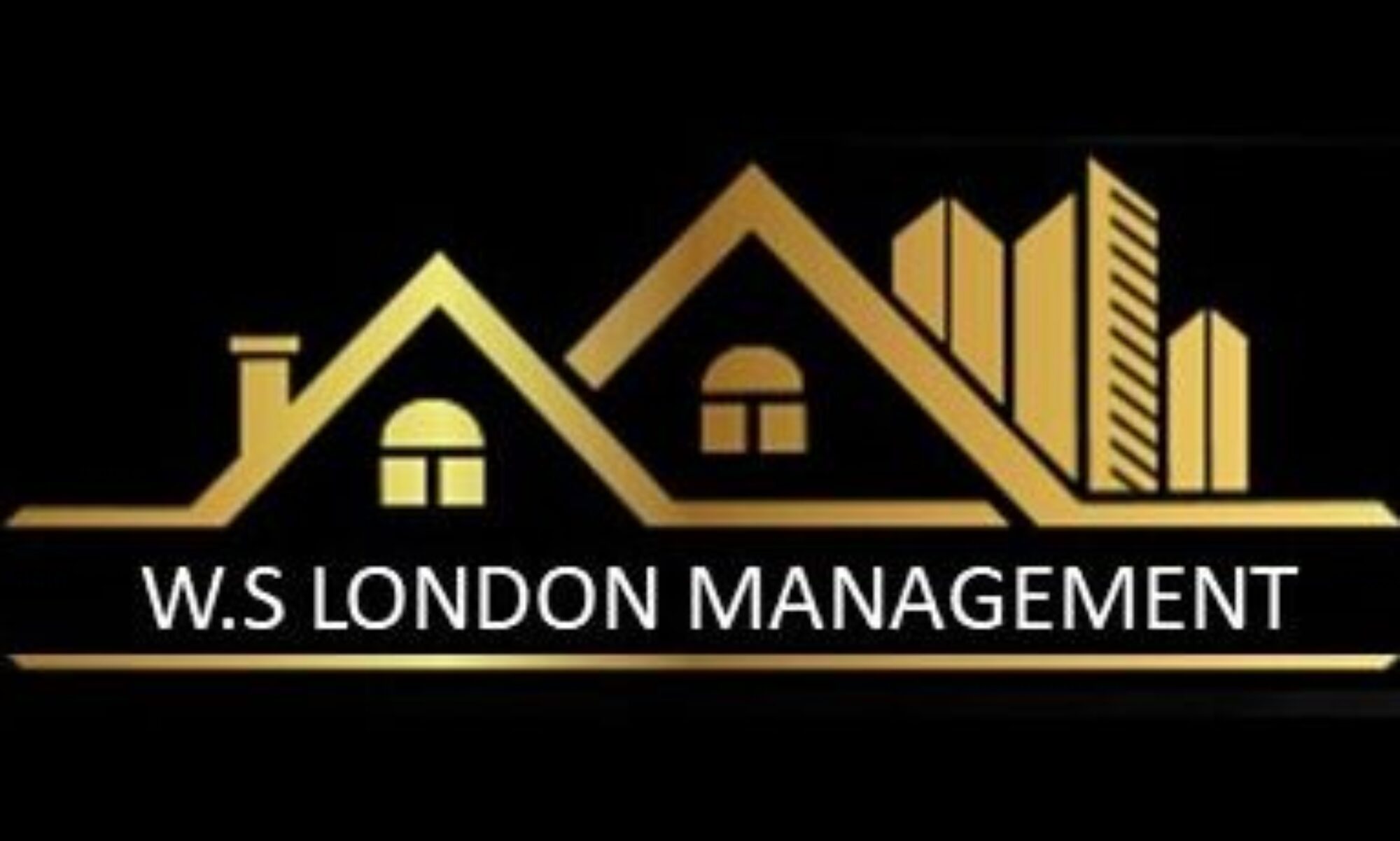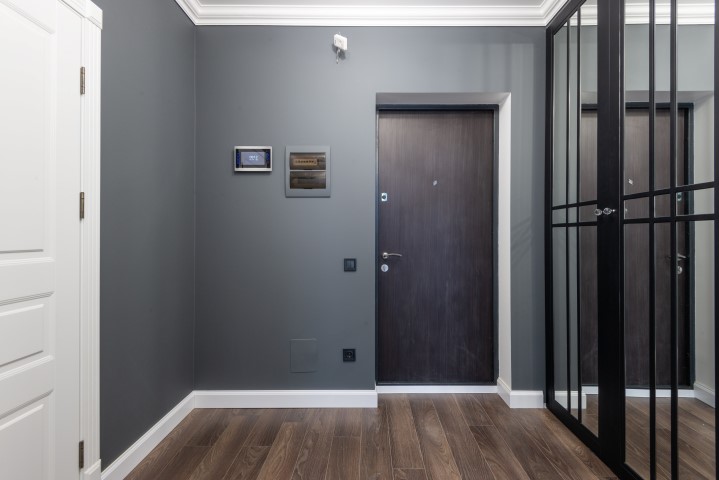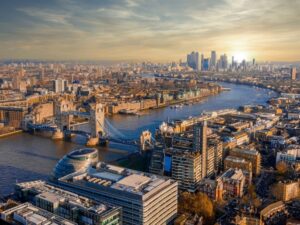London has long been a city that is synonymous with iconic urban landscapes and luxury living. With average house prices tipping towards the three-quarter of a million pounds mark, its housing market needs to deliver on the magnetic charm the city exudes. In this article, we’ll be taking a look at how Central London commands the importance of eco-friendly practices in a modern property market.
London’s commitment to sustainability is visible, with a variety of initiatives aimed at reducing its environmental footprint. Local authorities, in close collaboration with real estate developers and urban planners, have set ambitious sustainability goals, steering Central London toward a more environmentally responsible future.
Green Initiatives by Local Authorities
The local authorities have rolled out a series of green initiatives that encompass everything from public transportation to waste management. The introduction of cleaner, more efficient modes of public transport, such as electric buses and cycle lanes, has not only reduced air pollution but also made the city more accessible and appealing for residents and visitors alike.
Green Certifications and Standards for Buildings
In Central London, the property industry is increasingly adopting green certifications and standards, such as BREEAM (Building Research Establishment Environmental Assessment Method) and LEED (Leadership in Energy and Environmental Design).
These certifications are a testament to the city’s commitment to eco-friendly building practices and sustainable living. Luxury properties are no exception, with developers striving to achieve these certifications, thereby ensuring that their properties meet the highest environmental standards.
Robert E, of Walter Soriano London Management, says: “The property landscape, particularly from a legislative perspective in lettings, is already having to adhere to ever-shifting standards – as seen with the change of the minimum EPC rating to let a property. By obtaining the relevant certifications and meeting standards, you are essentially futureproofing your investment or development strategy to give you the best returns that you deserve”.
The Sustainable Neighborhoods in Central London
Central London boasts a growing number of sustainable neighbourhoods, where every facet of urban living is thoughtfully designed to minimise its environmental impact. These neighbourhoods are not only exemplars of green living but also attractive destinations for those who value a holistic, eco-conscious lifestyle.
Eco-Friendly Practices in A Modern Property Sector

Central London is experiencing a remarkable shift towards eco-friendliness and sustainability. The concept of “luxury” now goes hand in hand with a commitment to environmental responsibility, and understanding these practices is vital to staying ahead of the curve.
Energy Efficiency: How luxury properties are reducing their carbon footprint
Energy efficiency is at the forefront of eco-friendly luxury properties in Central London. The installation of cutting-edge technologies like smart thermostats, LED lighting, and energy-efficient appliances has become a standard practice.
These measures significantly reduce energy consumption, resulting in lower utility costs for both property owners and tenants. Luxury properties are often designed with optimal insulation and heating systems, ensuring that every square meter is energy-efficient.
Methods such as underfloor heating distribute heat evenly across a room, often using water pipes under the floor. It provides efficient methods of heating whilst reducing the overall carbon footprint.
Air Source Heat Pumps are also another great method. The pumps extract heat from the outside air and use it to warm the inside of the property, whilst also being energy efficient and serve as a viable option for also cooling.
Sustainable Building Materials: The choice of eco-friendly materials in construction
In the construction phase, the choice of materials is pivotal in shaping the sustainability of a property. Developers are increasingly opting for eco-friendly building materials, such as recycled wood, low-VOC paints, and sustainable flooring. Not only do these materials contribute to a reduced carbon footprint, but they also create a healthier indoor environment for residents.
Waste Management and Recycling Programs
Properties in Central London are incorporating comprehensive waste management and recycling programs. This includes designated recycling areas within the property, composting facilities, and organised waste collection systems. Such practices not only minimise the environmental impact but also foster a sense of responsibility among residents – and are almost standard expectations for any development.
Green Transportation and Infrastructure
Eco-conscious luxury properties often promote green transportation options. This can range from secure bike storage facilities to electric vehicle charging stations. Furthermore, these properties are strategically located near public transportation hubs, reducing the need for personal vehicles and lowering carbon emissions.
The Benefits of Sustainable Development
The shift towards sustainable development in Central London’s property market is not merely a trend; it’s a pivotal transformation with a range of advantages.
Financial Advantages: Lower utility costs and increased property value
One of the most tangible benefits of sustainable development is the significant reduction in utility costs. Properties designed with energy-efficient technologies and materials lead to lower electricity, water, and heating bills.
These cost savings are particularly attractive to tenants and homeowners alike, opening up demand which is beneficial for investors and developers and making eco-friendly properties a sound financial investment.
Sustainability practices can also enhance the long-term value of properties, attracting discerning buyers and increasing resale potential.
Environmental Benefits: Reduction in carbon emissions and overall ecological impact
Central London’s commitment to sustainable development directly contributes to the reduction of carbon emissions and environmental impact. Energy-efficient lighting and heating systems, as well as the use of renewable energy sources, significantly decrease a property’s carbon footprint. Sustainable construction practices also reduce the demand for virgin materials, conserving resources and minimising waste. These eco-friendly practices align with global efforts to combat climate change and promote a more sustainable future.
Attracting Eco-Conscious Tenants: Meeting the demands of modern luxury property renters

Today’s tenants and buyers are increasingly eco-conscious, and sustainability is now a real driver in decision-makers. Sustainable development caters to this growing demand, attracting a niche market of tenants who are willing to pay a premium for environmentally responsible properties.
Properties that boast green certifications and energy-efficient features have a competitive edge in the property market, ensuring consistent occupancy and rental income.
On this subject, Robert commented: “To secure the best return on investment or development, void periods and low occupancy rates need to be minimal. The market is highly competitive right now, so ensuring you offer all the things prospective occupants are looking for mitigates this quickly. In a crunching cost of living crisis, having high, cost-effective energy saving methods is critical”.
Enhanced Quality of Life: How eco-friendly surroundings contribute to well-being
Beyond financial and environmental advantages, sustainable luxury properties provide a higher quality of life for residents. Features like improved indoor air quality, reduced noise pollution, and access to green spaces contribute to overall well-being. These properties often incorporate sustainable landscaping and communal areas, creating a serene and healthy environment for residents to enjoy.
The Future of Sustainable Urban Development in Central London
Central London’s journey towards sustainable development is not a static accomplishment but a dynamic and ever-evolving process. It’s essential to look ahead and anticipate what the future holds for eco-friendly luxury real estate in Central London.
Upcoming Trends and Innovations
The world of sustainable urban development is continually evolving, and Central London is at the forefront of adopting the latest trends and innovations. Expect to see advancements in renewable energy solutions, smart home technologies, and sustainable transportation infrastructure.
Solar panels, geothermal heating and cooling systems, and rainwater harvesting are just a few examples of innovative technologies that will become increasingly prevalent. As the city grows, so too will its commitment to reducing its ecological footprint, and this will open up new opportunities for eco-friendly developments.
Challenges and Opportunities
With every transformative movement comes its share of challenges. In the context of sustainable urban development, Central London faces issues such as finding space for green initiatives in densely populated areas, the need to retrofit existing buildings for energy efficiency, and the potential limitations of renewable energy sources in an urban environment.
However, these challenges also present unique opportunities for developers, architects, and investors to pioneer solutions and lead the way in sustainable practices. The city’s commitment to addressing these challenges will help solidify its position as a global leader in sustainable development.
The Role of Regulations and Policies
The future of sustainable urban development in Central London is intrinsically tied to the regulations and policies enacted by local authorities. Expect to see more stringent environmental building codes, incentives for sustainable development, and heightened requirements for green certifications, which you can utilise and adapt into any property investment or development strategy.
Robert summarises: “The changes in the lettings landscape legislation has seen quite the number of investors assessing their exit strategies and selling on their rental stock. Simply put, keeping up with and implementing changes to adhere to the legislation can be time-consuming, costly, and the price to pay for not getting it right is, quite frankly, terrifying. That’s why it is so crucial to understand the role that regulations and policies play in property, and getting it right”.
The ever-changing sustainability scene in the London property market is sure to remain fascinating to not only watch, but enact upon. As the world powers continue to put emphasis on sustainability, both developing and investing in such projects here in Central London are key to securing the long-term financial success you deserve with property.




